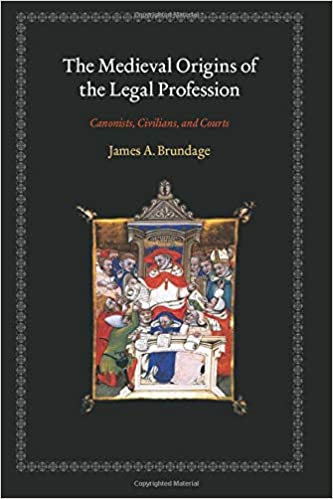FINE ART AUCTIONS & FIRST PARTY INSURANCE
Fine art should be insured in a variety of ways. One mode of insurance is normal property insurance, e.g., insuring the object against fire. Another is insurance against specialized thefts. Some of it is against losses sneaking up on buyers, sellers, and or middle-entities resulting from the object being looted, e.g., during World War II. (Maybe this is not actually a verb.)
Among the factors that can make such insurance unusual are the different parties that may need coverage. One of these is everyone in this case, of course, that is likely to want to be—or need to be–an insured. If this sort of insurance follows the established principles of property insurance, only a person or entity with a property interest in the object insured can have insurance on that object, whether personal property or real estate. (Most art is personal property, though buildings are real estate and maybe some large, fixed sculptures might also be.)
Sometimes that rule is not enforced strictly, but approximations are usually demanded, even in odd cases. This could happen where there is a complicated loan or court judgment, especially where the entity that does not in the end actually have an ownership interest in the property but comes close, or, in any case, bought the policy and might therefore be the policyholder.
Under some circumstances, the insured may have investigated a state of affairs and approved someone to be a named insured, even though that person did not have a property interest. An underwriter might do this, or counsel might. This situation can arise , or it could happen by error.
Now in the situation of a fine art auction, the parties that may need, think they need, or be perceived as needed, might be (1) the actual seller, (2) the entity or person for whom the ostensible seller is acting, if any, the ostensible seller being the owner’s agent, (3) the bidder, who is the trader on the floor working for the seller, the owner, some fraction of these, or the buyer. (4) Maybe the buyer, whether he is to be the owner or is simply the future owner’s agent, and (5) the ultimate owner. In addition, (6) the auction house will probably want to be insured, as will the most interesting character in the ensemble and the least known, to wit: the guarantors. if any.
Here is how the setup may look; for the sake of simplicity, I shall ignore the middle-entity agents and discuss only the seller, A, the house B, the buyer C, and the guarantors D. In any case, A has agreed that a picture is sold, on a given night. The auction
house, B, has agreed, for the purposes of this hypo, to sell it, come what may. However, B has guaranteed A a specified amount. But what if the sale price comes in lower than B’s guarantee? Enter D. They may stand in for B; they may pay on behalf of B, or they may reimburse B for what it has had to pay A. They might even be the actual buyer in the bushes, A’s former spouse who hates him.
The guarantors may have no problem if the auction house burns down. To be sure, A did not receive his return on the sale, but what B would have owed A has been wiped out in the A-B contract. It would contain an exclusionary clause. Consequently, the guarantors would owe nothing. This problem would be taken care of by fire insurance. upon which A would be an insured, along with others. A would probably have an obligation to provide this insurance.
An interesting situation would arise when the price of the purchase comes in below the guarantee of B to A. Depending on the size of the amount B may owe, it may seek a bailout from its group of guarantors. The guarantors are actually playing the role of a kind of insurer. Along with its other role, it is B has guaranteed A a specified amount of money, and the guarantor group has guaranteed B that it will not itself have to make good on at least part of its guarantee. (A may have a similar guarantor that has guaranteed that A will gen at least a given price. Again, this is a form of insurance.)
I have no problem conceiving B and D as two or more insurers, at least one primary and at least one “re.” Others might be nervous about this; that is certainly not its conceptualization, at least concretely.
Consider the hypo X agrees to do something for Y that will earn a $100 for Y; X guarantees that amount; Y fails to perform, so X owes Y $100. This is a lot of money for X so it has gone to Z, and bought a promise from Z that it will step in and pay if this happens. The fine arts auction transactions are instances of this. Insurance is risk transfer, and what has happened in this hypo is that some of X’s risk has been transferred to Z.
This template may have been concretely exemplified in the recent sale of the 1950 Giacometti elongated bronze sculpture of a woman painted gold, in part, entitled “Chariot”. Sotheby’s priced the piece at $104.3M, but the lone bidder bid and paid only a shade less than $101M. Assuming there was a guarantee running to the seller, this means that Sotheby’s (or somebody) owed $3.3M to the seller and “change.” If there is a guarantee on this piece, and $0 deductible or risk-retention, $3.3M± is what the guarantors would have to pay.
There can be interesting differences. B may estimate what its total sales are going to be on a given evening. This might involve a whole list of different objects. Thus, it may have made a guarantee to A1, A2, A3, and so on, or a guarantee to one seller for several works of art. It may be that the guarantors start owing money only when B’s estimate for the entire evening is above total sales. From the point of view of B, this may not make any difference if the various obligations have been calculated carefully. It will probably be fine with the guarantor since its owing money will probably decline very substantially if the appraisals are
accurate. Still, amounts may differ.
Thus things would be quite different if there was a whole set of Sotheby’s for all the sellers. In that case, the auction house might owe “Chariot’s” seller on the guarantee, but its loss there might be made to equal $0 by other sale prices. Or maybe not, depending on the terms of Sotheby’s guarantee for its guarantor.
(There is considerable media coverage of this sale. A 2014 issue of the NEW YORKER, for example, contains a long-ish history. For a shorter story, see Carol Vogel, “Thanks to Giacometti, Sotheby’s Hits Its Highest Total Even at Fall Opening,” NEW YORK TIMES, November 4, 2014. A photo of “Chariot” is easily findable at numerous locations on the Internet.)
In either system, whether object by object or by a whole lot, the guarantors—to the extent they are insurers—will require B to suffer part of the loss. It will demand this for its own protection since that will induce B to be more careful than it otherwise might be in its guarantee, regarding appraisals it accepts, and in the construction of its catalogs. This is a species of moral hazard, and it will be dealt with simply by the use of deductibles or the use of self-insured retentions.
B itself might have several guarantors, that is, insurers, if the sum to be, in effect, insured is very large. It also seems likely that the guarantors will get their own insurance if they have quite large exposures. In this situation, B might be considered a primary carrier insuring A, the guarantors a reinsurer, and the insurer of the guarantors if any, a retro-cessionaire.
This third one could, in addition, maybe a different kind of carrier—a primary carrier, even—for one of the other entities in the ensemble, perhaps even by means of the same package policy. Of course, so might B and D.
In theory, it could even be a liability carrier for at least one of them in the same policy. But that is a different topic.







Recent Comments